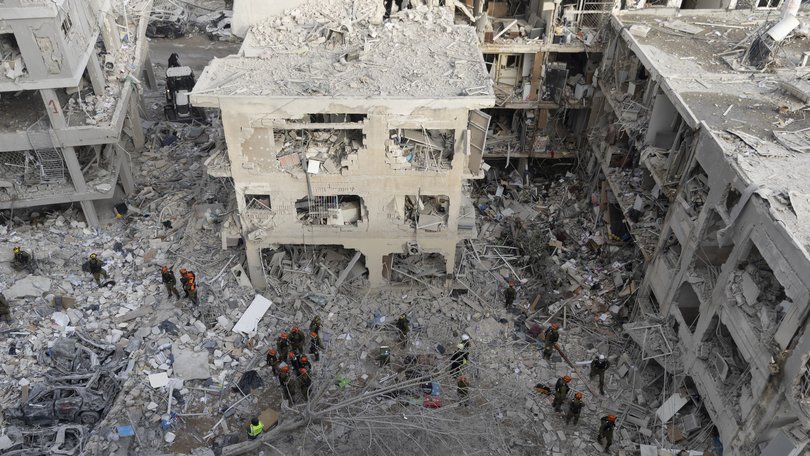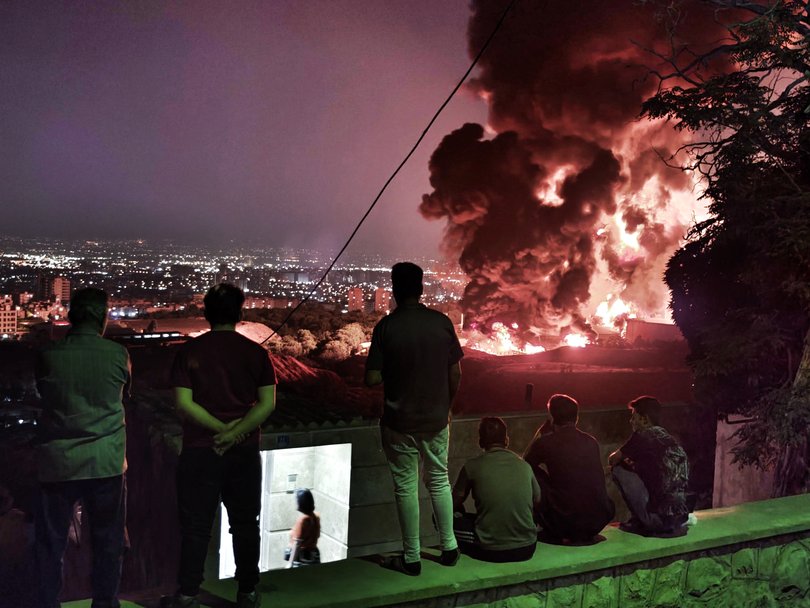THE NEW YORK TIMES: Even as Israel blitzes Tehran, it fears Iran’s destructive missiles

Prime Minister Benjamin Netanyahu of Israel has said that the sweeping attacks on Iran that began early Friday are essential to cripple what he describes as not one, but two “existential” threats to his country.
Alongside Iran’s nuclear program, which Mr Netanyahu has warned about for decades, he cites a newer menace: Iran’s ballistic missiles, more than 200 of which have been launched against Israel in waves of retaliatory barrages this weekend.
Even as Israel has pummelled Iran with its own sophisticated missiles, setting oil facilities in Tehran ablaze, it still fears Iran’s capacity for fierce retaliation.
Sign up to The Nightly's newsletters.
Get the first look at the digital newspaper, curated daily stories and breaking headlines delivered to your inbox.
By continuing you agree to our Terms and Privacy Policy.In a video statement Friday night, Mr Netanyahu said Iran had accelerated production and aimed to manufacture 300 ballistic missiles a month, which would amount to 20,000 missiles within six years. He said each one was like “a bus-full of explosives” primed to land on Israeli cities.
How many missiles has Iran fired, and how many of them hit Israel?
Iran has launched more than 200 missiles at Israel since Friday night, in addition to scores of explosive drones, according to Israeli authorities.
The Israeli military has so far not released data about the number of missiles it has intercepted or how many have evaded its air defences, saying such details could aid the enemy. But the Israeli prime minister’s office said Saturday afternoon that 17 sites had been identified where missiles made impact. Some have hit Tel Aviv and its suburbs of Ramat Gan and Rishon LeZion, in central Israel’s coastal plain. On Saturday night, a barrage was aimed at the northern city of Haifa and its surroundings.
Missile strikes Friday night and Saturday killed at least seven Israeli civilians and injured more than 200 people, including seven soldiers, according to authorities.
Brig. Gen. Effie Defrin, Israel’s chief military spokesperson, said Saturday that Israel’s air defences were “among the best in the world” but were “not hermetic.”
What have the Iranians been trying to hit?
Many of the sites struck by Iranian missiles appear to be inside Israeli cities. Israel has accused Iran of intentionally aiming at civilian areas.
It is unclear whether any sensitive military or infrastructure sites have been hit. Officials do not disclose such information, saying it would aid the enemy.
But Israel is a relatively small country — only slightly larger than New Jersey. Most of its population lives in the crowded coastal plain. And the military maintains bases and camps in many populated areas, as well as in more remote parts of the country.
A residential tower block that suffered a direct hit early Saturday is part of a popular entertainment district, filled with cafes and restaurants. It is also close to the main military and government headquarters in Tel Aviv, which was most likely the intended target.
Later Saturday, missiles were aimed at the port city of Haifa. Israel’s largest oil refinery is in the Haifa Bay area.
How many missiles does Iran have left?
The Israeli military has been striking Iran’s stocks of ballistic missiles and missile launchers, reducing the number it has left to launch at Israel.
Military officials and experts say Iran still has hundreds of missiles — perhaps up to 2,000 — with ranges that can reach Israel. If Iran continues launching missiles at its current rate, it could most likely sustain the pace of fire for a few more days.
How powerful are the missiles hitting Israel?
Mr Netanyahu said each Iranian missile carried a ton, or 2,000 pounds, of explosives, although military officials and experts say the weight can vary.
Tal Inbar, an Israeli space and missile expert, said Iran’s ballistic missiles carried from 300 to 700 kilograms, or about 660 to 1,540 pounds, of explosives and that the total weight of the warhead could be up to 2,200 pounds.
What has Israel learned about Iran’s missile capabilities?
Mr Inbar said that Israel was not surprised by Iran’s missile capabilities, having already been the target of large barrages of similar projectiles in April 2024 and October 2024, when Iran retaliated for Israeli strikes on its territory and interests.
The Houthi militia, an Iran-backed group based in Yemen, has also been firing ballistic missiles at Israel, saying it is acting in solidarity with the Palestinians in the Gaza Strip.
But the Houthis tend to fire a single missile in a day, and most of them have been intercepted by Israeli and American air defence systems.

The difference this time, Mr Inbar said, was the quantity of missiles that Iran fired simultaneously, in an effort to overwhelm air defences, and the fact that some impact sites have been in densely populated areas, where just the shock waves cause extensive damage.
He said some footage released by the Israeli military Saturday showed at least one type of missile that Iran had not fired at Israel before. Named the “Shahed Haj Qassem,” it has a range of nearly 1,000 miles.
It is a solid propellant missile that does not need to be refuelled before launching, Mr Inbar said, meaning that it can sit underground for years and become operational within minutes.
This article originally appeared in The New York Times.
© 2025 The New York Times Company
Originally published on The New York Times
